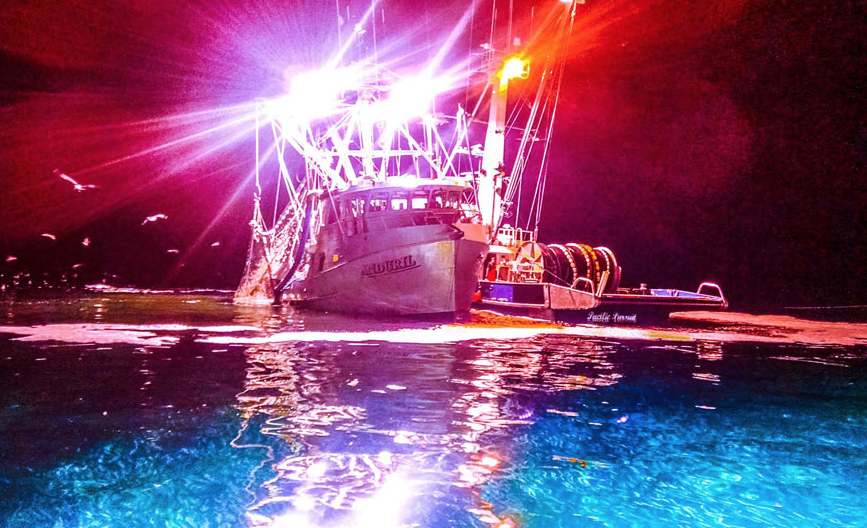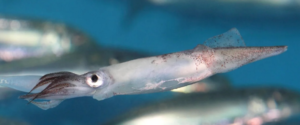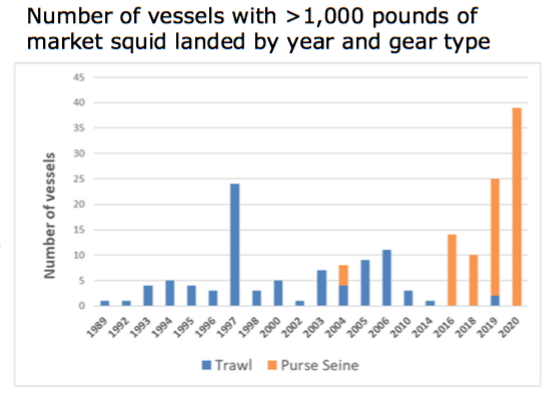
By DANA TIMS/YachatsNews
The Oregon Fish and Wildlife Commission, citing concerns over sustainability, voted unanimously Friday to prohibit independently operated light boats to help catch market squid off the Oregon coast.
The unanimous vote, which met with both support and criticism from fishing interests, takes effect immediately.

The lights, used for night fishing, transfix the small, fist-sized squid, which are then rounded up in nets set by small skiffs. The so-called seine skiffs, along with the larger “catcher vessels” that actually haul in the squid, will still be able to use lights for navigation purposes.
The squid are used primarily for calamari.
The new rules also adopted a definition of seine skiffs differentiating them from light boats. Going forward, seine skiffs will also be required to obtain a commercial fishing boat license.
Commission members, during a lengthy meeting in Salem, acknowledged the financial impact the light boat ban will have on fishing outfits that have already purchased expensive lighting systems to install on separately operated boats.

“We need to figure this out before we get more people into this fishery,” said commission chair Mary Wahl of Langlois. “No matter which way we go, someone is going to be hurt economically.”
Although market squid landings were reported in Oregon as far back as the early 1980s, it’s only been since 2016 that sizable numbers have been reported. The biggest year was 2020, when an estimated 40 boats hauled in a combined 10 million pounds of market squid. Last year, 25 vessels took part, landing 5.5 million pounds.
The fluctuations appear related to ocean temperatures. In years when warmer temperatures are recorded, far more market squid turn up off the Oregon coast, concentrating off the central coast.

Formally named California market squid, or Doryteuthis opalescens, reproduce quickly and generally don’t live more than one year. Adults can reach up to 12 inches long, have an abundance of both predators and prey and a habitat range stretching from Mexico to Alaska.
The first move toward a possible prohibition on light boats came last year, when commissioners directed staff to write an interim report about the market squid fishery, including potential qualifications to cap the number of boats that can participate.
A decision on making this a “limited entry fishery” is not expected until sometime next year. If commissioners do opt for a limited entry fishery, a decision they have already made means that only boats that have fished for market squid before Jan. 1, 2022 could take part.
An advisory panel to the commission reported that there are a total of 15 light boats that have operated in Oregon, and that the number varies from four to six light boats in any given year.
Also factoring into the light boat ban were reports from crabbers that market squid vessels can cut lines to crab pots when the boats turn off their lights and move at night to a different fishing location.
“Staff has heard of conflicts between crab and squid fisheries for some years,” said Greg Krutzikowsky, Oregon Department of Fish and Wildlife nearshore policy project leader. “There has been discussion about trying to separate them, but most agree the real need is better cooperation and communication.”
- Dana Tims is an Oregon freelance writer who contributes regularly to YachatsNews.com. He can be reached at DanaTims24@gmail.com


